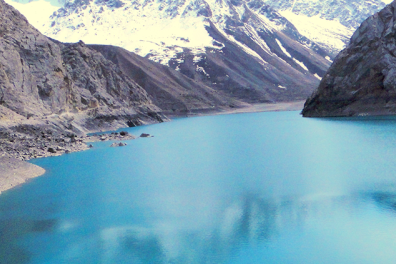Tajikistan, 30 years of independence" study day, December 13

Study day organized by the Centre de recherches Europes-Eurasie-CREE (Inalco).
Monday, December 13, 2021 - 09:30-16:30 - Maison de la recherche - Auditorium Georges Dumézil
Inalco - 2, rue de Lille - Paris 7e
Organizer : Catherine Poujol (CREE, Inalco)
Contact: catherine.poujol@inalco.fr
Required registration completed.
Health pass and mask required.
Tajikistan, 30 years of independence
As part of the exceptional exhibition "Tajikistan au pays des Fleuves d'Or" taking place at the Musée Guimet from October 14, 2021 to January 10, 2022, Inalco is organizing a study day devoted to this little-known country of the former USSR, on the edge of Eurasia, bordering China, Afghanistan, Uzbekistan and Kyrgyzstan. With a population of nearly 10 million today, this state, which has been independent for thirty years, boasts a majestic and complex geography that places it at the intersection of several civilizational plates: China, India, the Iranian plateau and its Afghan extension. The embodiment of Central Asia's long history since the prestigious Samanid dynasty to which it now belongs, it is criss-crossed by the ancient Silk Roads, the routes of conquerors from the Achaemenids and Alexander the Great to Genghis Khan and Tamerlane, the builders of empires of which it was a small mountainous portion. It was subjected to the Russian Empire in the 19th century, proved a stumbling block to the British at the time of the Great Game, then became the Soviet republic furthest from Moscow, the poorest, but also the most demographically active, the only one to speak an Iranian language, Tajik, compared with its four Turkic-speaking neighbors.
Independent since 1991, Tajikistan is the only country of the former USSR to have experienced a murderous civil war, the traces of which it has managed to erase today. It is the scene of a competition for influence between Russia and China, and shares with the rest of the world the problems linked to the domestic job market, which generates strong labor migration, the risk of terrorism, the Covid pandemic and, even more than its neighbors, the new political situation in Afghanistan. All of this will be discussed on December 13, with contributions from seven researchers from CNRS, EHESS and Inalco, brought together for the occasion.
.
Affiche_Journée d'étude : Le Tadjikistan, 30 années d’indépendance_13-12-2021 (55.23 KB, .pdf)